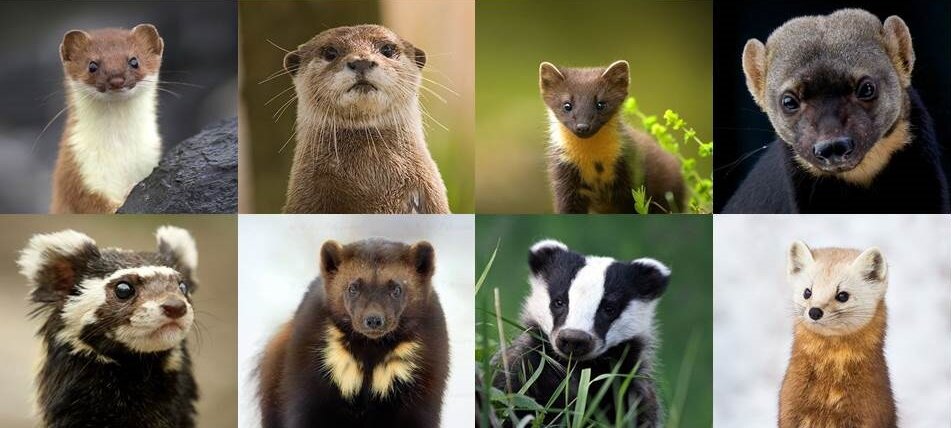Resumen
Los mustélidos son uno de los grupos de carnívoros más llamativos por su apariencia y comportamiento. Te invitamos a conocer un poco más sobre la importancia y diversidad de este fascinante grupo de organismos.
.jpg)
Citas
¹ Don E. Wilson & DeeAnn M. Reeder, (eds). (2005). Family Mustelidae. Mammal Species of the World. A taxonomic and geographic reference. Ed. 3, 2 vols., 2142 pp. Johns Hopkins University Press, Baltimore. ISBN 0-8018-8221-4. A nomenclatural review.
² Nowak, R. (1991). Carnivora: family Mustelidae. Pp. 1104-1105 in Walker's Mammals of the World, Vol. 2, 5th Edition. Baltimore: Johns Hopkins University Press.
³ Dragoo, J., R. Honeycutt. (1997). Systematics of mustelid-like carnivores. Journal of Mammalogy, 78: 426-443.
⁴ Vauhan, T., J. Ryan, N. Czaplewski. (2000). Mammalogy, 4th Edition. Toronto: Brooks Cole.
⁵ Sato, J., T. Hosada, W. Mieczyslaw, K. Tsuchiya, Y. Yamamoto, H. Suzuki. (2003). Phylogenetic relationships and divergence times among mustelids (Mammalia: Carnivora) based on nucleotide sequences of the nuclear interphotoreceptor retinoid binding protein and mitochondrial cytochrome b genes. Zoological Science, 20: 243-264.
⁶ Whitaker, J., W. Hamilton. (1998). Mammals of the Eastern United States. Ithaca: Comstock Publishing.
⁷ Hutchings, M., P. White. (2000). Mustelid scent-marking in managed ecosystems: implications for population management. Mammal Review, 30: 157-169.
⁸ Carolyn M. King y Roger A. Powell. (2006). The Natural History of Weasels and Stoats: Ecology, Behavior, and Management. The Natural History of Weasels and Stoats: Ecology, Behavior, and Management. 1-458. 10.1093/acprof:oso/9780195322712.001.0001.
⁹ Bright, P. (2000). Lessons from lean beasts: conservation biology of the mustelids. Mammal Review, 30: 217-226.
##plugins.facebook.comentarios##

Esta obra está bajo una licencia internacional Creative Commons Atribución 4.0.


